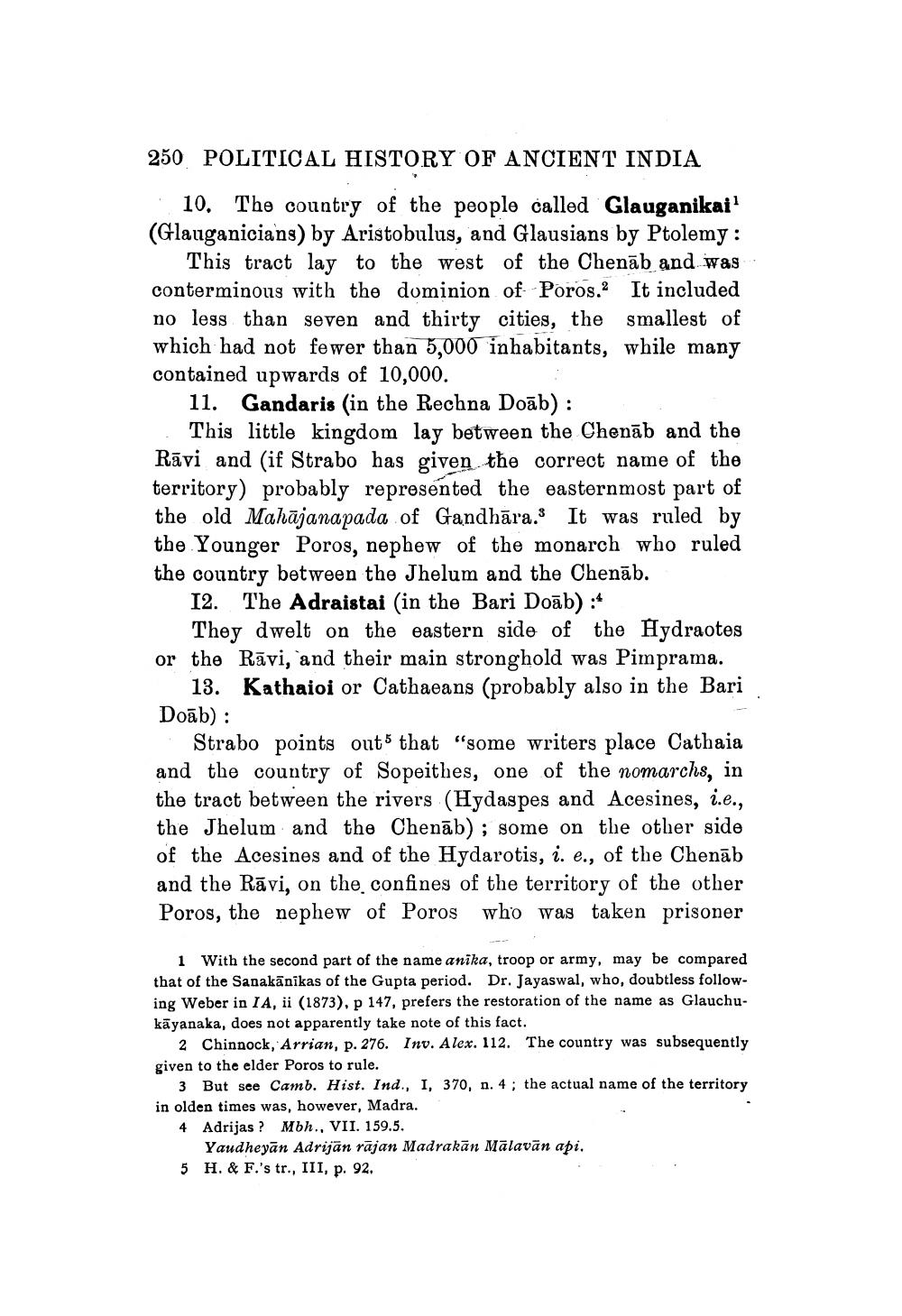________________
250 POLITICAL HISTORY OF ANCIENT INDIA
10. The country of the people called Glauganikai (Glauganicians) by Aristobulus, and Glausians by Ptolemy :
This tract lay to the west of the Chenāb and was conterminous with the dominion of Poros. It included no less than seven and thirty cities, the smallest of which had not fewer than 5,000 inhabitants, while many contained upwards of 10,000.
11. Gandaris (in the Rechna Doāb):
This little kingdom lay between the Chenāb and the Rāvi and (if Strabo has given the correct name of the territory) probably represented the easternmost part of the old Mahājanapada of Gandhāra. It was ruled by the Younger Poros, nephew of the monarch who ruled the country between the Jhelum and the Chenāb.
12. The Adraistai (in the Bari Doāb) :
They dwelt on the eastern side of the Hydraotes or the Rāvi, and their main stronghold was Pimprama.
13. Kathaioi or Cathaeans (probably also in the Bari Doāb):
Strabo points out that "some writers place Cathaia and the country of Sopeithes, one of the nomarchs, in the tract between the rivers (Hydaspes and Acesines, i.e., the Jhelum and the Chenāb); some on the other side of the Acesines and of the Hydarotis, i. e., of the Chenāb and the Rāvi, on the confines of the territory of the other Poros, the nephew of Poros who was taken prisoner
1 With the second part of the name anika, troop or army, may be compared that of the Sanakānikas of the Gupta period. Dr. Jayaswal, who, doubtless following Weber in IA, ii (1873), p 147, prefers the restoration of the name as Glauchukāyanaka, does not apparently take note of this fact.
2 Chinnock, Arrian, p. 276. Inv. Alex. 112. The country was subsequently given to the elder Poros to rule.
3 But see Camb. Hist. Ind., I, 370, n. 4; the actual name of the territory in olden times was, however, Madra. 4 Adrijas? Mbh., VII. 159.5.
Yaudheyān Adrijan rājan Madrakan Malavān api. 5 H. & F.'s tr., III, p. 92.




